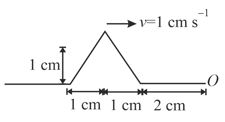Embibe Experts Solutions for Chapter: Wave Motion on a String, Exercise 1: Exercise-1
Embibe Experts Physics Solutions for Exercise - Embibe Experts Solutions for Chapter: Wave Motion on a String, Exercise 1: Exercise-1
Attempt the practice questions on Chapter 20: Wave Motion on a String, Exercise 1: Exercise-1 with hints and solutions to strengthen your understanding. Beta Question Bank for Engineering: Physics solutions are prepared by Experienced Embibe Experts.
Questions from Embibe Experts Solutions for Chapter: Wave Motion on a String, Exercise 1: Exercise-1 with Hints & Solutions
The resultant amplitude in interference with two coherent sources depends upon :-
Phenomenon of interference is observed:-
A uniform rope having some mass hinges vertically from a rigid support. A transverse wave pulse is produced at the lower end. The speed of the wave pulse varies with height from the lower end as:-
A uniform rope having some mass hinges vertically from a rigid support. A transverse wave pulse is produced at the lower end. The speed of the wave pulse varies with height from the lower end as:-

A plane wave is incident on a surface. Equation of the reflected wave is . Which of the following statements is not correct?
A string is cut into three parts, having fundamental frequencies and respectively. Then original fundamental frequency related by the expression as (other quantities are identical):-
An object of specific gravity is hung from a thin steel wire. The fundamental frequency for transverse standing waves in the wire is . The object is immersed in water, so that one half of its volume is submerged. The new fundamental frequency (in ) is:-
The frequency from to is
